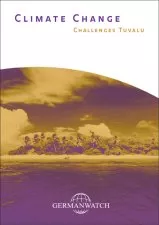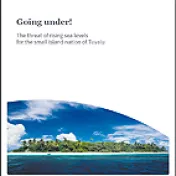
"We don’t want to leave this place. We don’t want to leave, it’s our land, our God given land, it is our culture, we can’t leave. People won’t leave until the very last minute.” With these dramatic words, Paani Laupepa, the former assistant secretary at Tuvalu's Ministry of Natural Resources, Energy and Environment, expressed the feelings of many Tuvaluans when it comes to the worst-case scenario of climate change and its effects on small island nations.
The scenarios and warnings of international scientists on climate change and its inevitable consequences must be like a constant Damocles Sword for the inhabitants of Tuvalu. For the 21st century, the Intergovernmental Panel on Climate Change (IPCC) states that there will be a warming of global temperatures and a rise of the sea level by up to almost one meter.
How is such a country in peril, like Tuvalu, comprised of nine small low-lying islands in the South Pacific, affected by climate change? How can it protect itself from this intangible threat, especially when there is no precedent for such action? Tuvalu has raised these questions.
Solutions will have to be created to avoid catastrophes. Consistent international action like the implementation of the Kyoto Protocol, however, is still missing, despite the fact that Tuvalu, for example, is already experiencing adverse changes. Therefore, what else has to happen to convince governments to take meaningful action?
A case study of climate change. Available in German as well.
